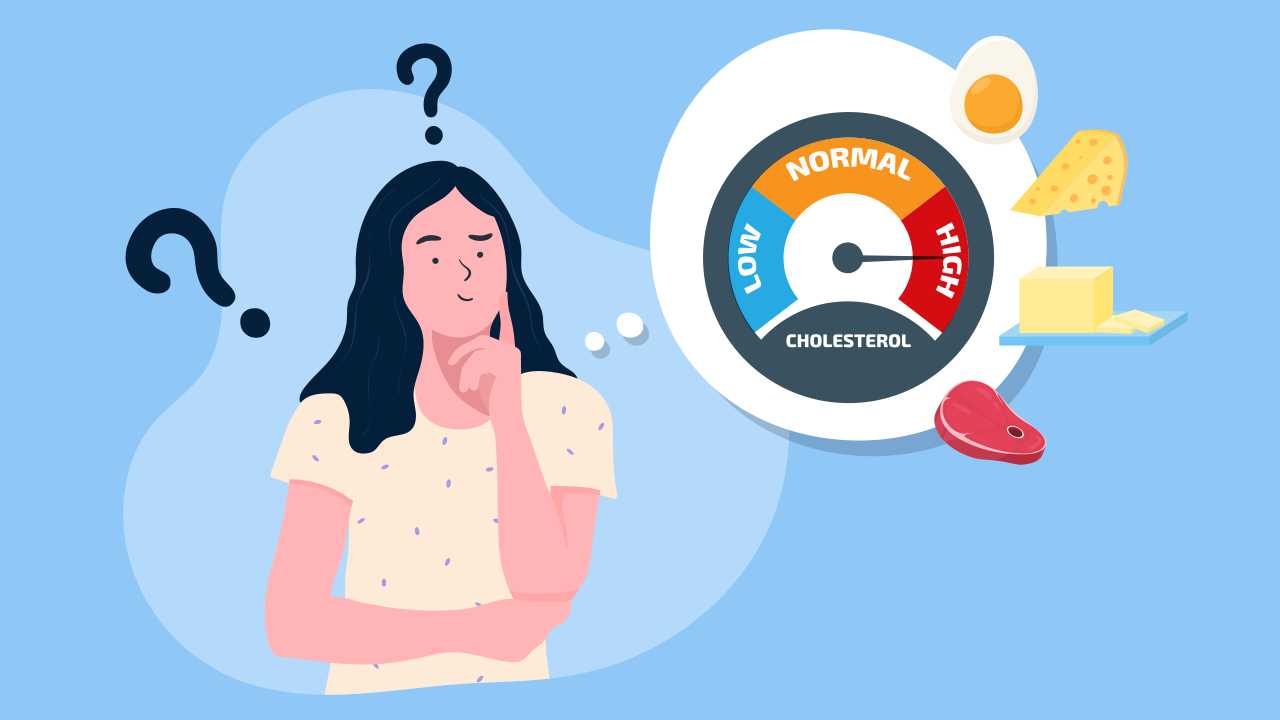
High in Iron: A Diet to Beat Iron Deficiency Anemia
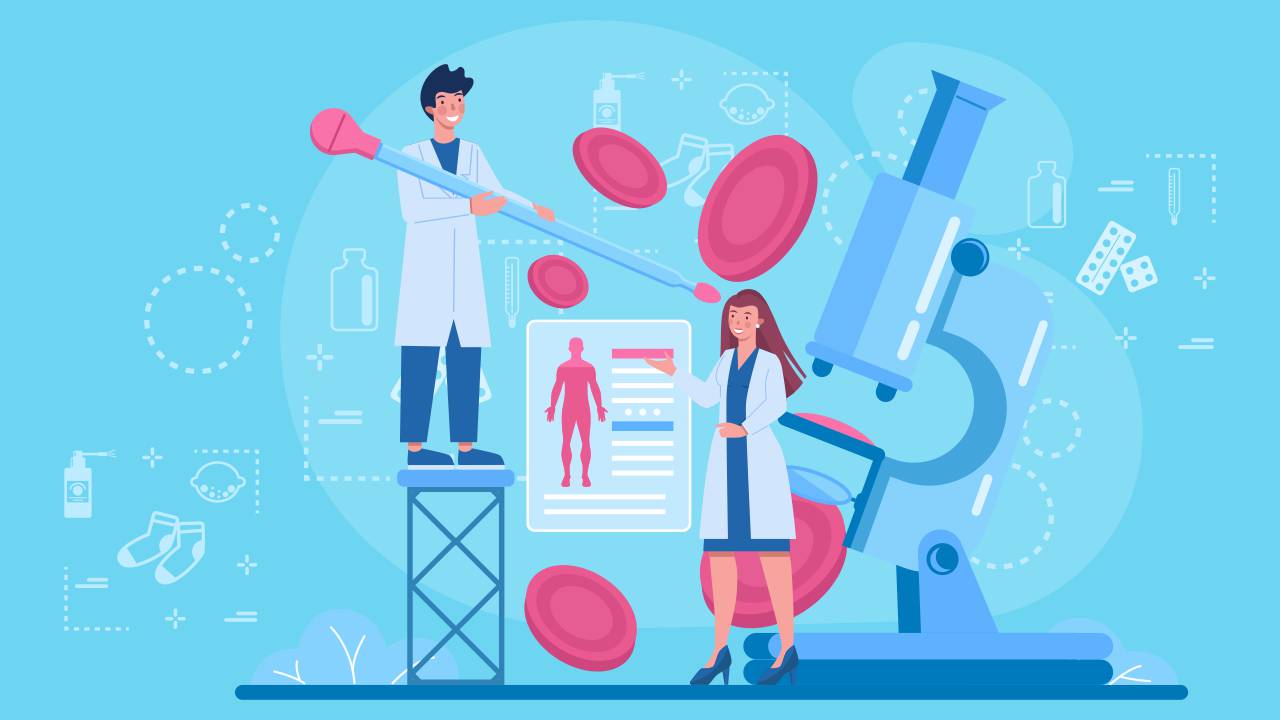
It’s difficult to gauge the impact of iron deficiency on a daily basis. But, if people have been commenting on your pale look, and you feel tired and breathless, or have been losing hair significantly, it might be time to test for iron deficiency anemia (IDA).
IDA happens when iron levels drop and your body cannot make enough healthy red blood cells. Fewer red blood cells could mean you have less hemoglobin. If you have a low hemoglobin count, your body cannot get enough oxygen, which makes you feel tired.
Anemia is a global health problem. The World Health Organization (WHO) estimates that 42% children of less than five years of age and 40% pregnant women across the world are anemic. Anemia is widespread in India, with half the women of reproductive age suffering from IDA.
Why do you need iron?
Iron is an essential mineral that is naturally present in food. Its main function is the production of hemoglobin (a type of protein) in the red blood cells, which is responsible for carrying oxygen from the lungs to the rest of the body. This is essential, because it helps in providing energy for all your daily activities.
Iron is also necessary for physical growth, brain development, the production of some hormones, and the normal functioning of the immune system. It is stored in the body (mainly in the liver and muscles) to ensure its levels are maintained in the blood.
Iron deficiency can lead to a range of serious problems, which usually develops in stages. In the initial stages, your iron stores are used up to meet the demands of your body, but you do not have any obvious symptoms. Eventually, the deficiency leads to anemia.
Symptoms
When your iron stores are low, you experience:
- Exhaustion
- Dizziness
- Poor memory and concentration
- Increased sensitivity to cold
- Increased risk of infections
- Rapid heartbeat
- Pale skin
- Brittle nails
- Hair loss
Causes of IDA
1. IDA usually occurs due to an iron-deficient diet, but it can also develop from certain physiological or chronic conditions
2. In women of child-bearing age, heavy periods and pregnancy are the most common causes of IDA
3. IDA is rare in men and usually develops due to bleeding in the stomach and intestines from conditions like ulcers and piles
4. Elderly people and those with cancer, kidney, and gastrointestinal diseases are at a higher risk of developing IDA, because they cannot properly absorb iron from their diet
5. Research suggests that endurance athletes also tend to develop IDA as they lose significant amounts of iron through heavy perspiration as well as through potential intestinal bleeding brought on by high-intensity exercise
Treatment
If you have any symptoms of iron deficiency, consult a doctor or a dietitian. They can assess your iron status through blood tests and a dietary review. They may then advise you to make dietary changes or take iron supplements, depending on the severity of your deficiency.
Once your iron levels have returned to normal and any underlying causes are addressed, you must maintain the level by taking the recommended amounts of iron every day. However, iron supplements should only be taken under supervision as excess iron can build up to toxic levels, disrupting body functions and be hazardous to health.
How much iron do you need?
Your daily dietary iron intake depends on several factors, such as your age, gender, and physiological needs. For example, women of reproductive age need more iron to replenish the monthly losses due to menstruation. Also, pregnant women and infants have higher iron needs to fulfill the requirements of rapid growth and development. Special conditions, like pregnancy, lactation or any other health condition may require different doses of iron. Check with your doctor or dietitian for your individual needs.
For your daily iron intake, the National Institute of Nutrition (NIN) recommends:
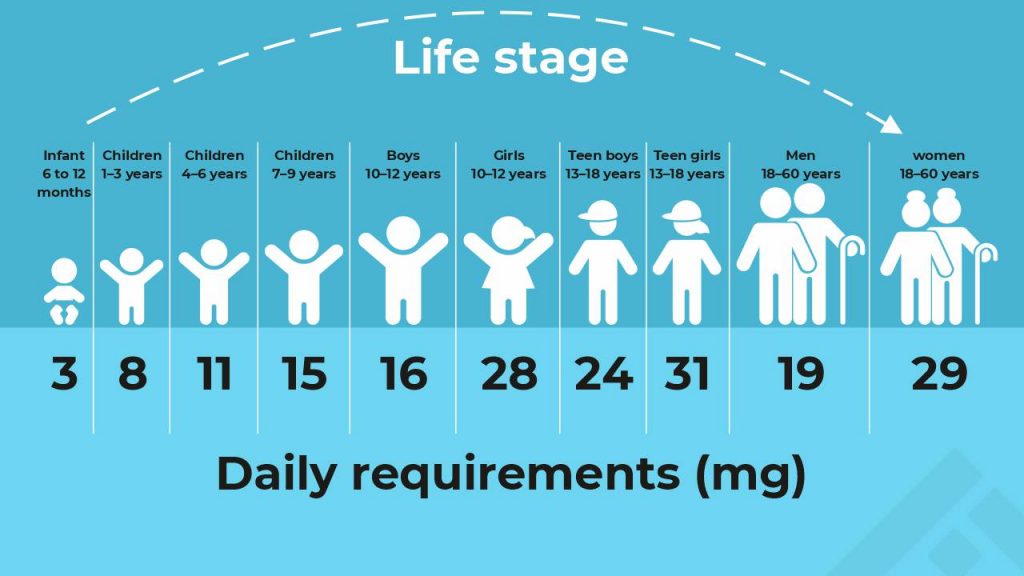
Iron-rich foods
Your iron requirements can be easily met by eating an iron-rich diet. Dietary iron has two forms: heme and nonheme. Heme iron is found in animal foods, while non-heme iron is present in plant-based foods. The best food sources of iron include:
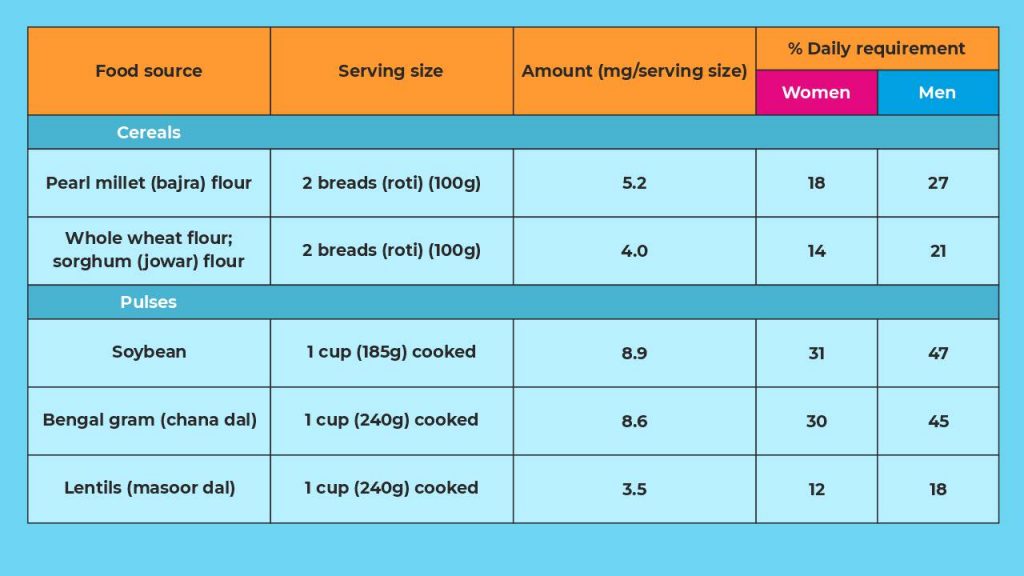
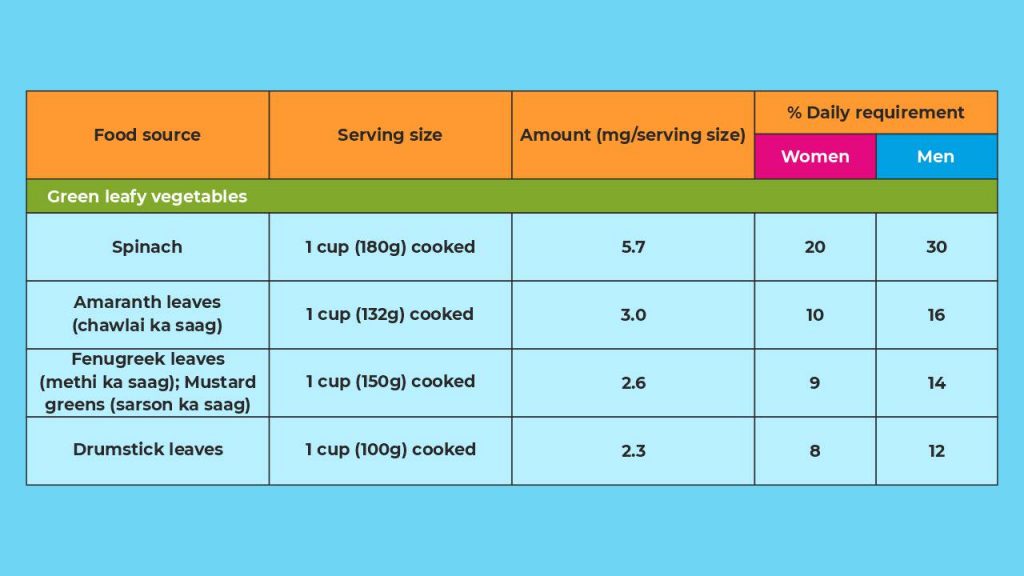
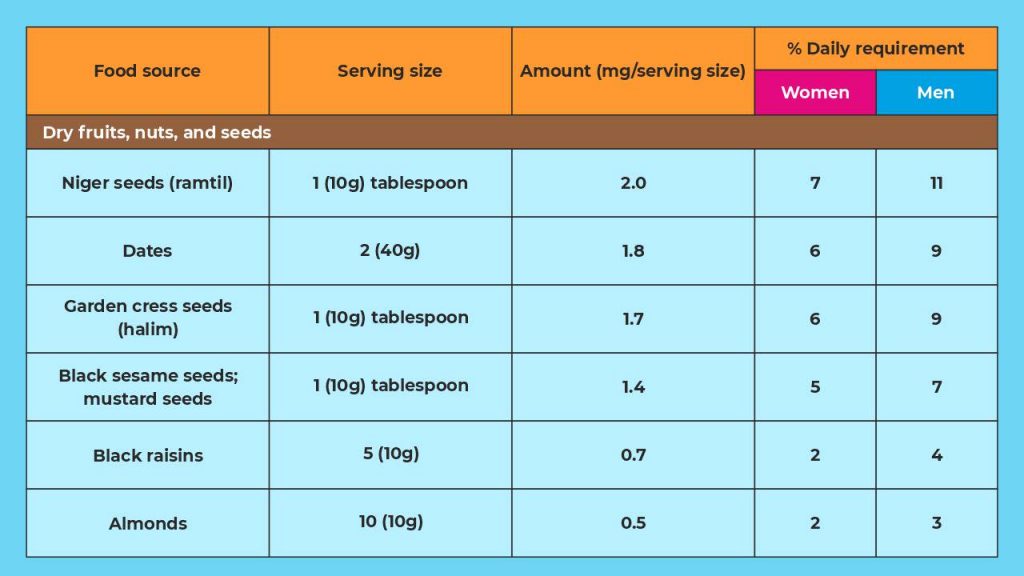
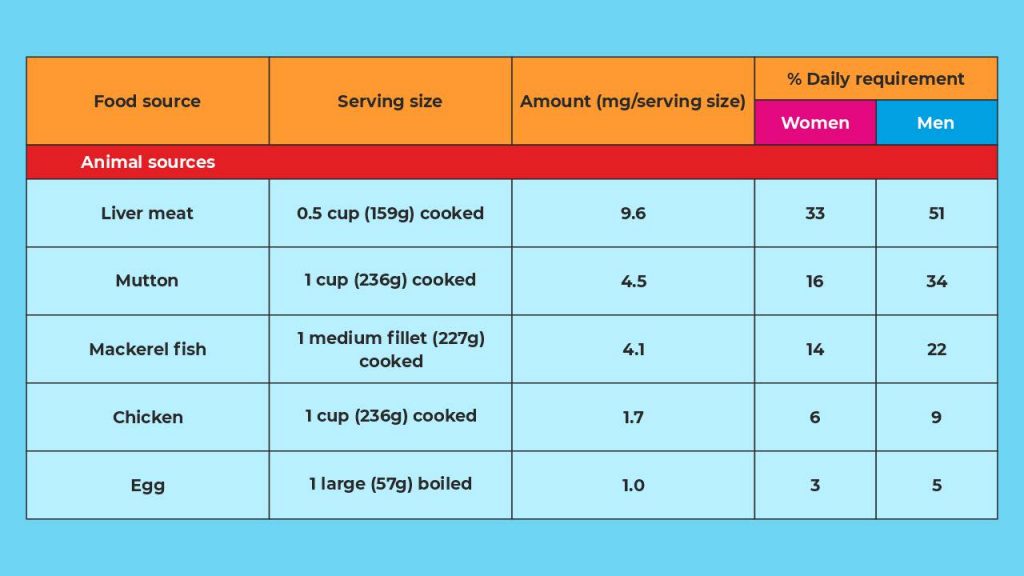
How to ensure optimal iron absorption from food?
Your body can naturally absorb heme iron better than non-heme. But you can improve the absorption of plant-based iron by following these guidelines:
1. Consume vitamin C-rich fruits and vegetables along with your meal, because vitamin C increases iron absorption from plant-based foods. For example, you may absorb up to 70% more iron from a mustard greens’ preparation (sarson ka saag) if you drink half a glass of amla or orange juice along with your meal.
2. Eat meat dishes along with plant sources of iron. This is because heme iron increases the absorption of non-heme iron. So, eating whole wheat bread (roti) along with chicken curry is a good practice.
3. Cook plant sources of iron (such as vegetables), as cooking enhances the amount of iron that is available for absorption by the body. For example, our bodies may be able to absorb 33% more iron from cooked spinach than eating it raw.
4. Do not have dairy products along with plant sources of iron, since the calcium in these foods may decrease iron absorption by up to 60%.
5. Do not drink tea or coffee along with or immediately after your meals, because these beverages contain tannins — a compound that binds with non-heme iron and reduces its absorption in the body.
Also read: Micronutrients: Vitamins, Minerals and the Role They Play
Iron is an essential mineral. This is why It’s important to maintain adequate levels of iron in your diet to avoid health complications from IDA, especially if you belong to a high-risk group. Select what you eat carefully and be mindful of how certain foods may enhance or inhibit iron absorption.
References
1. Beard JL. Iron biology in immune function, muscle metabolism and neuronal functioning. J Nutr 2001; 131: 568S–80S.
2. Camaschella C. Iron-deficiency anemia. N Engl J Med 2015; 372: 1832–43.
3. Finkelstein J, Fothergill A, Guetterman H, et al. Anemia and Iron Status in Women of Reproductive Age in Southern India. Curr Dev Nutr. 2020; 4: 826.
4. ICMR-National Institute of Nutrition. Recommended dietary allowances and estimated average nutrient requirements for Indians – A report of the expert group. Hyderabad, India: Indian Council for Medical Research, 2020.
5. Longvah T, Ananthan R, Bhaskarachary K, et al. Indian food composition tables. Hyderabad, India: National Institute of Nutrition, Indian Council of Medical Research, 2017.
6. Sharma KK. Improving bioavailability of iron in Indian diets through food-based approaches for the control of iron deficiency anaemia. Food Nutrition and Agriculture 2003; 32: 51–61.








